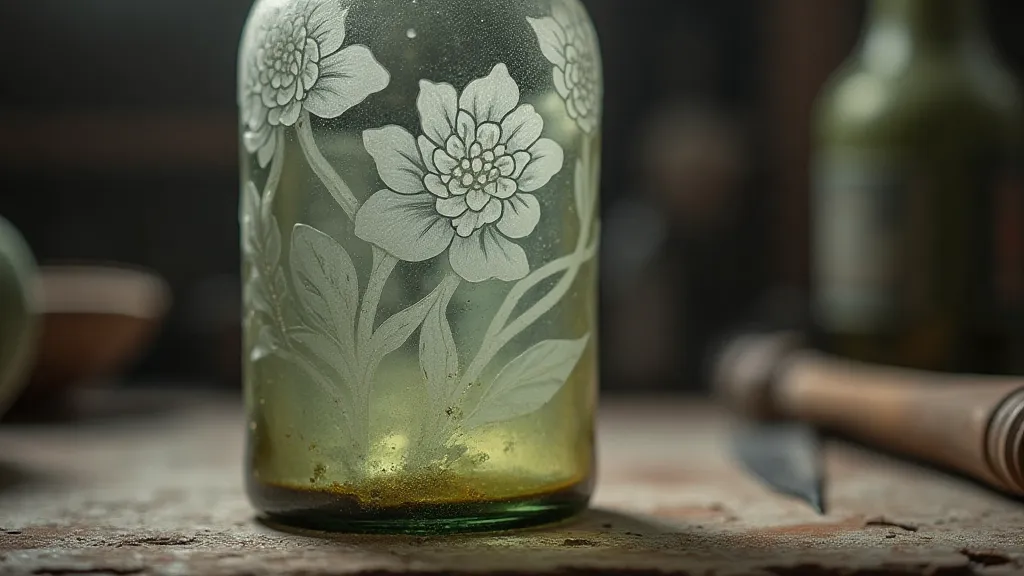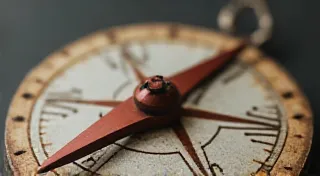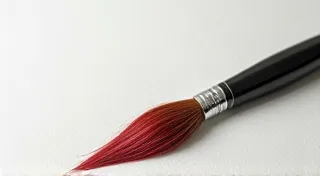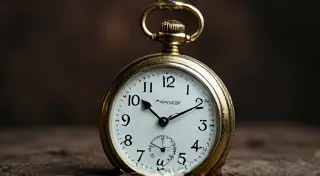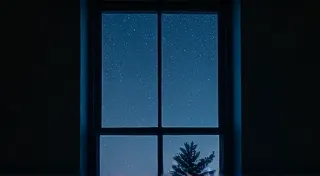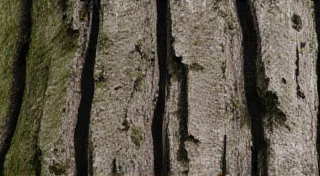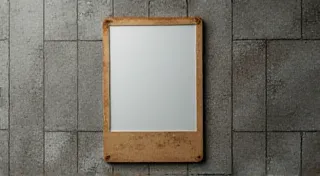The Phantom’s Touch: Creating Ethereal Imagery in Glass
There's a particular magic to antique bottles. Not merely the thrill of the hunt, or the appreciation for their historical significance, but a sense that they hold whispered secrets. Imagine, for a moment, a dusty accordion – bellows collapsed, keys yellowed with age – still capable of carrying the faint echo of a waltz. That’s what I feel when I hold a perfectly preserved antique bottle; a lingering presence of a time gone by. And when I begin to practice reverse glass etching, I strive to imbue my work with that same feeling – a ghostly resonance, an image that seems to float just beneath the surface, as if conjured from the glass itself.
My fascination with reverse glass etching began not with bottles, but with old window panes. Salvaged from a farmhouse demolition, these panes were grimy, obscured by layers of neglect. As I began the process of cleaning and restoring them, I realized that the imperfections – the tiny bubbles, the subtle waves in the glass – weren’t flaws to be eradicated, but integral parts of their character. Reverse glass etching, with its ability to create a depth and subtlety unmatched by other techniques, felt like the perfect way to celebrate that inherent beauty. It's a slow, deliberate process, demanding patience and a profound respect for the medium.
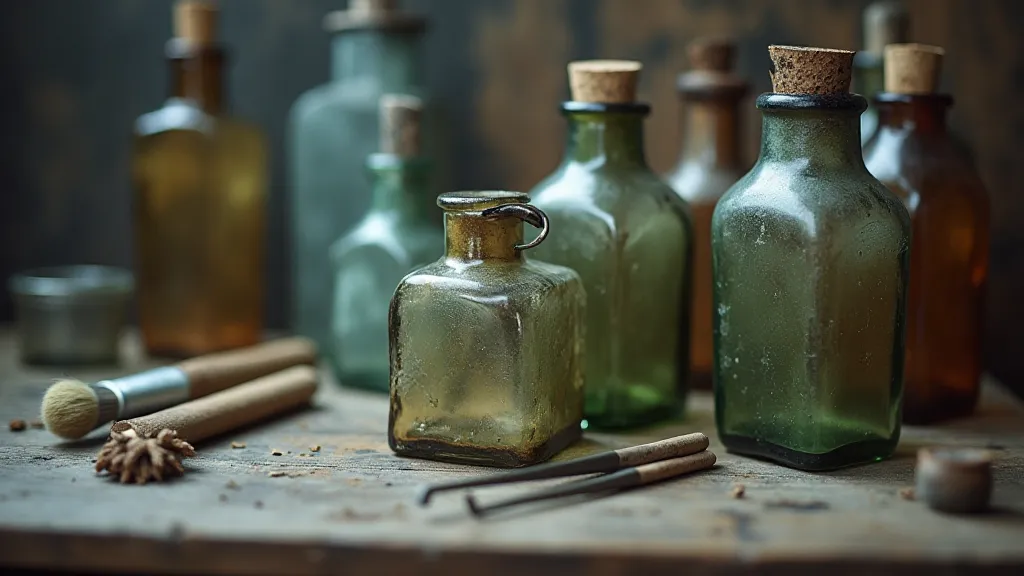
The Allure of Reverse Glass Etching
Reverse glass etching isn’t a new technique. Its roots lie deep in the 18th and 19th centuries, initially used to decorate bottles and window panes for businesses and wealthy patrons. The process, at its core, is simple: a design is applied to the glass using a resist – traditionally, a stencil, but today, a broader range of materials are used. The exposed glass is then treated with etching cream, which chemically removes a layer of the glass surface, creating a matte area. The resist is then carefully removed, leaving a contrasting image. However, it’s the *way* in which this seemingly simple process is executed that elevates it from a craft to an art form.
The “reverse” aspect is crucial. Unlike traditional etching, where the image is raised, in reverse etching, the image is recessed. This creates an incredible sense of depth. The subtle nuances in the etching process itself, the way the resist interacts with the glass, and the careful layering of designs all contribute to the final result. It's about more than just achieving a visual effect; it’s about conveying a feeling, a sense of history and memory. This connection to the past resonates deeply with me, and it’s what drives my passion for this craft.
Mastering Stencils and Layering
The key to creating this ethereal effect lies in meticulous stencil work and clever layering techniques. Simple, single-layer stencils can create beautiful results, but to truly achieve that sense of depth and illusion, multiple layers are essential. Each layer acts as another plane, subtly altering the way light interacts with the glass. Consider, for instance, the challenge of depicting movement – a bird in flight, a dancing figure. Achieving that sense of fluidity and grace requires a nuanced understanding of how multiple layers can suggest motion without explicitly portraying it. The layering isn’t simply additive; it’s transformative, creating something greater than the sum of its parts.
I often start with a base layer, something simple and almost abstract – perhaps swirling patterns mimicking the texture of water or the gentle curve of a leaf. This layer acts as a canvas, subtly altering the perceived depth of the subsequent images. The next layer might introduce a recognizable element – a bird in flight, a sprig of flowers, a fragment of an antique map. The placement of each layer is critical. Overlapping edges soften the lines, creating a sense of blending and transparency. Experimentation is paramount. There’s no single formula; it's a conversation between the artist and the glass. It’s a process of constant observation and refinement, of allowing the glass to guide the creative journey. The resulting images often tell stories, evoking feelings and memories that transcend the visual representation. Think about the power of a fragment – a broken piece of pottery, a faded photograph – it holds a universe of untold narratives. The layering of stencils in reverse glass etching allows us to create similar evocative fragments, capturing fleeting moments in time.
Consider the choice of stencil material. Traditionally, oiled paper was used, but modern options like vinyl and acetate offer greater precision and durability. However, even with these advancements, the imperfections inherent in the stencil itself can add character to the final piece. A tiny tear, a slight bleed – these aren’t mistakes; they’re part of the story. These unexpected variations add authenticity and charm, reminding us that every piece is unique, bearing the mark of the artist’s hand and the quirks of the process. It is often through these ‘imperfections’ that the true beauty and essence of the artwork emerge, offering a glimpse into the creative process and the artist’s connection to the medium.
Historical Context: Bottles and Their Stories
The bottles themselves hold their own histories. Think about the countless hands that have held them – the pharmacist carefully dispensing medicine, the traveling salesman offering his wares, the farmer storing his harvest. Each bottle is a silent witness to a bygone era. Decorating antique bottles with reverse glass etching isn’t merely about adding a pretty picture; it’s about honoring that history, adding another layer of narrative to a vessel that has already lived a full life. The historical significance of these bottles is profound. Imagine the stories they could tell if they could speak – the hopes and dreams of those who used them, the challenges they faced, the moments of joy and sorrow they witnessed. As an artist, I feel a deep responsibility to treat these vessels with respect, to acknowledge their past and to contribute to their ongoing story. The desire to personalize these vessels through techniques like those detailed in The Alchemist’s Signature: Personalizing Etched Bottles with Markings, further enhances their narrative potential.
The types of bottles you choose also influence the final aesthetic. A squat, rounded beer bottle lends itself to a different design than a tall, elegant apothecary jar. Understanding the bottle’s original purpose can inspire your design choices and deepen the connection to the past. The design choices should always complement the bottle's form and function, enhancing its inherent beauty and historical significance. The beauty lies not only in the final etched design but also in the dialogue between the design and the vessel itself, a conversation that spans centuries.
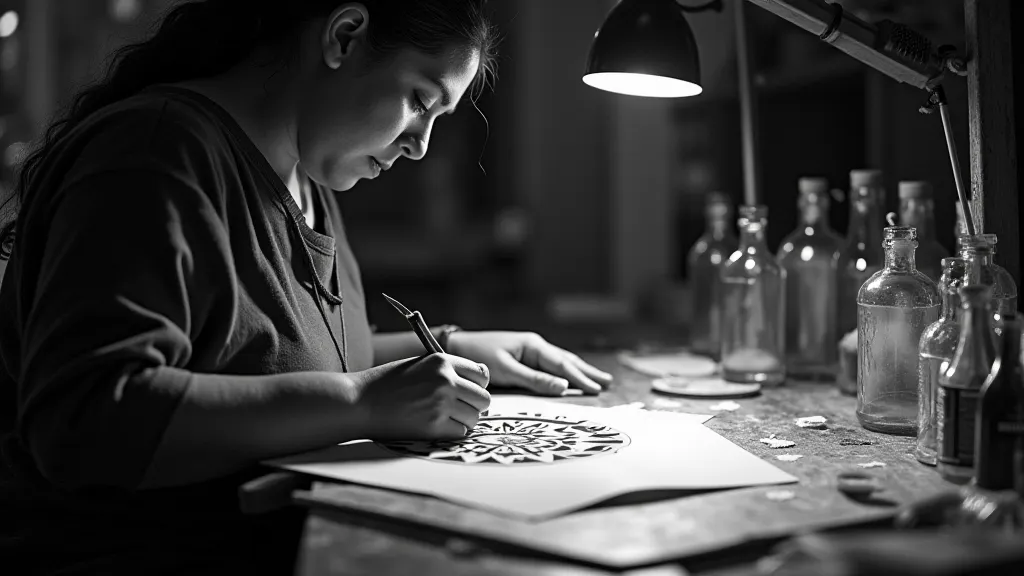
The Importance of Patience and Observation
Reverse glass etching is not a technique for the impatient. It demands a slow, deliberate pace, a willingness to observe closely, and an acceptance of imperfections. The etching process itself takes time – often several hours, depending on the thickness of the glass and the desired level of contrast. Rushing the process almost always leads to disappointing results. It’s about embracing the quiet moments, the subtle nuances, the unexpected transformations that occur when time is given to unfold.
It's also vital to understand the nuances of the etching cream. Temperature, humidity, and even the age of the cream can affect the results. Always wear appropriate safety gear – gloves and eye protection are essential. A small test patch is always advisable before committing to the entire design. Furthermore, observation extends beyond the technical aspects. Paying attention to the way light plays on the glass, the way the etched areas interact with the surrounding environment, is crucial to understanding the full potential of the technique. Truly exceptional pieces emerge from a deep and sustained dialogue with the medium.
Ultimately, the art of reverse glass etching is about more than just decorating glass. It’s about honoring history, celebrating craftsmanship, and creating something that resonates with the soul – a phantom’s touch, captured in glass.
